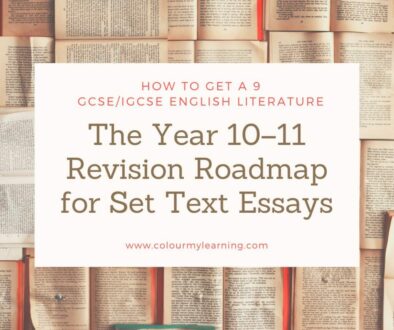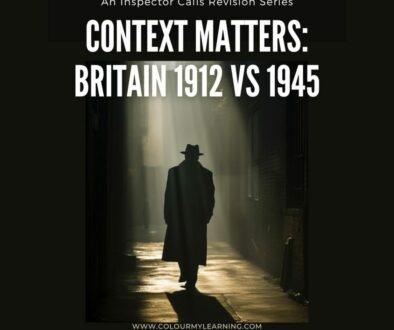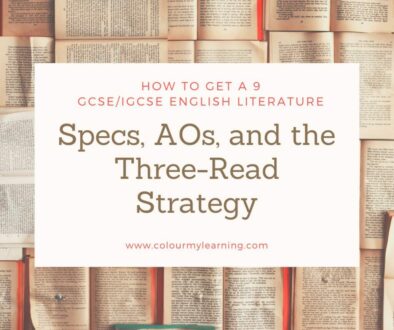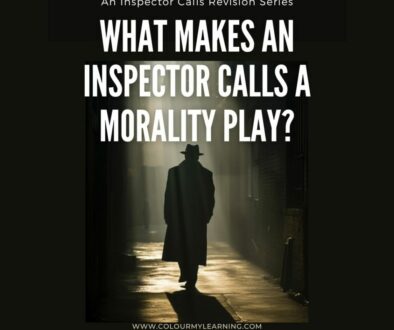How Priestley Uses Language, Form and Structure in An Inspector Calls – IGCSE Guide
Understanding how J.B. Priestley uses language, form and structure in An Inspector Calls is essential for achieving top marks in your IGCSE English Literature exam. These elements are central to AO2 – the exam assessment objective that focuses on the writer’s methods and how they shape meaning.
In this article, we’ll define what these terms mean in the context of the play, provide clear examples to support your analysis, and help you feel more confident in writing strong, evidence-based responses.
What Do Language, Form and Structure Actually Mean?
Before you can write about these elements effectively, it’s important to understand the difference between them:
Language
Language refers to how characters speak and the literary devices Priestley uses to communicate meaning. These might include:
- Emotive language
- Repetition
- Dramatic irony
- Symbolism
- Contrast in tone or vocabulary between characters
Priestley’s language choices often reflect wider themes, such as responsibility, power, or generational conflict.
Form
An Inspector Calls is a play, and this is a vital part of how it delivers its message. As a piece of drama, it relies on stage directions, performance, dialogue, and audience reaction.
Priestley carefully uses dramatic form to:
- Control entrances and exits
- Direct tension and pacing
- Present characters in real time, in front of the audience
- Create an immersive moral and emotional experience
Structure
Structure refers to how the play is built and organised — the sequence of events, the order in which information is revealed, and the overall shape of the narrative.
Priestley’s structure is deliberate:
- The play unfolds in real time over a single evening
- It uses a cyclical ending, hinting that events could repeat
- Each character is questioned in turn, building suspense
- Information is withheld and revealed at strategic moments to maximise emotional impact
Key Examples of Language, Form and Structure in Action
To support your revision, here are several effective examples you can use in essays. Each one connects a technique to its purpose and effect.
Example 1: Dramatic Irony
“The Titanic… unsinkable, absolutely unsinkable.” – Mr Birling
This is a clear use of dramatic irony. The audience knows the Titanic did sink, so Birling’s certainty makes him look foolish and undermines his authority. Priestley uses this to criticise arrogance and short-sighted leadership.
Example 2: Inclusive Language and Symbolism
“We are members of one body.” – Inspector Goole
The Inspector’s speech uses inclusive pronouns and religious-style language to emphasise unity and moral responsibility. It reflects Priestley’s socialist message and appeals to the audience’s conscience.
Example 3: Stage Direction and Cyclical Structure
[The telephone rings sharply.] – Final stage direction
This moment mirrors the beginning of the play when the first phone call interrupts dinner. The cyclical structure reinforces the idea that the characters — and by extension, society — may face the same test again if lessons are not learned.
Example 4: Language Shift Reflecting Character Growth
“It frightens me the way you talk.” – Sheila
Sheila’s increasing emotional maturity is reflected in her direct and urgent language. This moment shows how she begins to challenge her parents’ complacency, embodying the play’s hope for the younger generation.
How to Write About Language, Form and Structure (AO2)
When writing about AO2, your goal is to explain how Priestley’s choices create meaning and contribute to the play’s message. Follow this simple structure in your paragraphs:
- Make a Point – What technique is being used?
- Use a Quotation – Choose something short but meaningful.
- Identify the Technique – Is it irony, symbolism, structure, or something else?
- Explain the Effect – What does it make the audience think or feel?
- Link to Priestley’s Message – How does it support a theme or idea?
Sample PETAL-Style Sentence:
Priestley uses dramatic irony in the line “unsinkable, absolutely unsinkable” to undermine Mr Birling’s authority and expose his arrogance. This helps the audience see Birling as foolish, reinforcing the idea that the older generation is out of touch with reality.
Final Tips for AO2 Success
Always connect techniques to themes and character development
- Avoid feature-spotting — don’t just label devices; explain their effect
- Use a variety of examples across the play, not just one scene
- Practise writing analytical paragraphs using sentence starters and quote banks
If you’re confident analysing language, form and structure, you’ll be well on your way to a strong exam response.
Need More Help?
If you’re revising for Edexcel IGCSE English Literature Paper 2, our full revision guide for An Inspector Calls includes:
- A glossary of dramatic and literary terms
- Essay planning templates and sentence starters
- Annotated model paragraphs for AO1, AO2 and AO3
- Past paper questions by theme and character
You can find more information about our An Inspector Calls Revision Guide and other free resources on our An Inspector Calls: Revision Resources Page.











